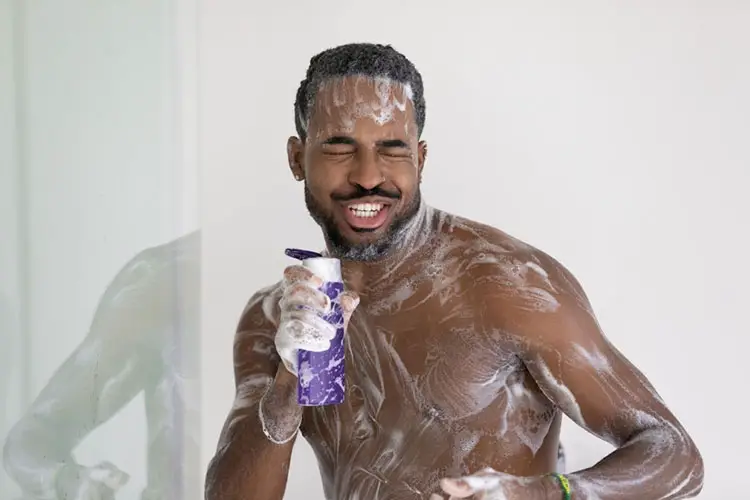
Few things are as fulfilling as a trip to the shower – especially when you have the right body wash. From the therapy of a lovely fragrance permeating the entire bathroom to the comfort of a rich, thick lather on your skin. And finally, the delight of washing your stress away. It’s clear that body washes are a must-have for all skin types.
Since this is undisputed, what then is the most hydrating body wash for men? Any body wash that is gentle and contains moisturizing ingredients like natural oils and hyaluronic acid. It should also not contain added fragrance or harsh chemicals. This type of body wash will replenish your skin nicely.
Finding this perfect body wash can, however, be an uphill task with so many options begging for attention. And here’s where we can help. Now, if you have dry skin, you’re especially in luck. You can totally revamp your skin with the best hydrating body wash for men with dry skin.
Whenever you make a purchase through links on this page we make a small commission from our affiliate partners. Learn more
The Best Hydrating Body Washes For Men With Dry Skin
Faith In Nature Body Wash
Prices pulled from the Amazon Product Advertising API on:
Product prices and availability are accurate as of the date/time indicated and are subject to change. Any price and availability information displayed on [relevant Amazon Site(s), as applicable] at the time of purchase will apply to the purchase of this product.
This natural vegan body wash gently cleanses without removing the skin’s natural oils. The scent released when bathing is simply delightful. Thankfully, it works up a rich, thick lather, so a small quantity is enough to get by for a bath therapy session.
It is made with essential and organic oils, brimming with tropical aromas and natural hydration for the skin. It is Sodium Lauryl Sulfate (SLS) and paraben-free, and, very importantly, animal cruelty-free.
This is your paradise in a bottle.
Oars + Alps Natural Body and Face Wash
Prices pulled from the Amazon Product Advertising API on:
Product prices and availability are accurate as of the date/time indicated and are subject to change. Any price and availability information displayed on [relevant Amazon Site(s), as applicable] at the time of purchase will apply to the purchase of this product.
This one right here is one of the best hydrating body washes. Not only is it made from natural and organic ingredients, but it also has an amazing fragrance — California Coast — and it works up a rich, thick lather. You gotta agree that it can be hard to find a sulfate-free body wash that works up a good lather.
And yes, Oars + Alps Natural Body and Face Wash are from glycol. It’s parabens, phthalates, sulfate, and cruelty-free.
Aveeno Daily Moisturizing Body Range
Prices pulled from the Amazon Product Advertising API on:
Product prices and availability are accurate as of the date/time indicated and are subject to change. Any price and availability information displayed on [relevant Amazon Site(s), as applicable] at the time of purchase will apply to the purchase of this product.
The AVEENO Daily Moisturising Body Range gives a yogurt concentrate that is rich in oatmeal and nutrients. And yes, it has a delicious-smelling oat scent and is suitable for sensitive skin.
This product is also helpful for certain skin issues such as eczema. But first, see your dermatologist for this.
Dove Men+ Care
Prices pulled from the Amazon Product Advertising API on:
Product prices and availability are accurate as of the date/time indicated and are subject to change. Any price and availability information displayed on [relevant Amazon Site(s), as applicable] at the time of purchase will apply to the purchase of this product.
You may also want to try out the Dove Men+ Care body wash. It is specifically designed for men’s skin, and it leaves the skin hydrated and pampered after some shower time.
The dove men+care is powered by MicroMoisture Technology and formulated with plant-based moisturizers. It also features skin-strengthening nutrients for rebuilding the skin.
Best Men’s Body Wash For Jock Itches
Personal cleanliness is a sure way to prevent jock itches or to hasten the recovery process of one who’s experiencing such discomfort.
A regular shower is a must — and what’s a shower without a helpful body wash?
For jock itches, you might want to try any of the following body washes:
Tea Tree Body & Foot Wash
Prices pulled from the Amazon Product Advertising API on:
Product prices and availability are accurate as of the date/time indicated and are subject to change. Any price and availability information displayed on [relevant Amazon Site(s), as applicable] at the time of purchase will apply to the purchase of this product.
Made with the highest quality ingredients, this body wash is designed to tackle skin infections. It is soothing and great for sensitive skin.
Purely Northwest Tea Tree Oil
Prices pulled from the Amazon Product Advertising API on:
Product prices and availability are accurate as of the date/time indicated and are subject to change. Any price and availability information displayed on [relevant Amazon Site(s), as applicable] at the time of purchase will apply to the purchase of this product.
This plant-based wash uses a blend of essential oils to tackle, soothe and relieve fungal skin infections. One of its ingredients — aloe vera, provides soothing moisturization for dehydrated skin as well.
We know how uncomfortable jock itches are, so always wear a clean pair of underwear. And avoid jeans that are too tight in your crotch area.
Best Men’s Body Wash For Eczema
Below is a list of body washes you might want to consider using in your fight against eczema:
Remedy Soap Tea Tree Oil Body Wash
Prices pulled from the Amazon Product Advertising API on:
Product prices and availability are accurate as of the date/time indicated and are subject to change. Any price and availability information displayed on [relevant Amazon Site(s), as applicable] at the time of purchase will apply to the purchase of this product.
This body wash is made from premium botanical tea tree oil, eucalyptus oil, and peppermint oil, all known for naturally helping skin irritations. It also contains some essential oils like jojoba oil, coconut oil, and olive oil to moisturize, refresh and deodorize.
Best Men’s Body Wash For Acne-prone Skin
If you’re having acne episodes, you might want to try out any of these body washes, of course, with the consent of your dermatologist:
Black Wolf Charcoal Powder Body Wash For Men
Prices pulled from the Amazon Product Advertising API on:
Product prices and availability are accurate as of the date/time indicated and are subject to change. Any price and availability information displayed on [relevant Amazon Site(s), as applicable] at the time of purchase will apply to the purchase of this product.
This beautiful product consists of very helpful ingredients such as charcoal extract, cucumber extract, blue sage, and salicylic acid.
Salicylic acid might be more welcome than you know because it works to penetrate deep into the skin, dissolving whiteheads & blackheads. It also helps unclog pores and banish dying skin cells that could become tomorrow’s problem. This works towards preventing new acne from forming.
The charcoal and cucumber-derived formulas show up to soothe the skin and leave it refreshing when they’re gone.
All-Natural Tea Tree Eucalyptus Aloe Body Wash
Prices pulled from the Amazon Product Advertising API on:
Product prices and availability are accurate as of the date/time indicated and are subject to change. Any price and availability information displayed on [relevant Amazon Site(s), as applicable] at the time of purchase will apply to the purchase of this product.
This one here is perfect for athletes, and active people and even the ladies can have a go at this one.
It is made from the highest quality product, free from alcohol, parabens, or sulfates. More importantly, animals didn’t get hurt in the process.
Not only does it soothe the irritated skin, but it also washes away and defends against impurities. These impurities take the blame for a good deal of the most common skin and foot irritations — body odor, acne, jock itches, athlete’s foot, etc.
This is definitely a good option for lovers of all things natural.
Best Smelling Body Wash That Lasts
Smelling good is indeed good business. Thanks to colognes, perfumes, etc., a great number of people can actually pull off smelling good. But then, there’s no crime in having an extra bit of a nice smell.
Some body washes are a “must-have” for the one who is knee-deep in the smell-good business. So, having a lingering heavenly scent from a body wash will do wonders.
You might want to consider any of the following if you’re looking to have a long-lasting smell:
Cremo – Blue Cedar & Cyprus
Prices pulled from the Amazon Product Advertising API on:
Product prices and availability are accurate as of the date/time indicated and are subject to change. Any price and availability information displayed on [relevant Amazon Site(s), as applicable] at the time of purchase will apply to the purchase of this product.
Cremo products are famed for their “Good Uncommon Scents.”
This one here lays claims to a strong fragrance of blue cedar wood, cypress, and of course, citrus zest. As a plus, it contains marula oil to nourish your skin in all seasons. It also washes off easily while leaving a rich, moisturizing barrier without a heavy and waxy feeling.
Faith in Nature (Coconut) Body Wash
Prices pulled from the Amazon Product Advertising API on:
Product prices and availability are accurate as of the date/time indicated and are subject to change. Any price and availability information displayed on [relevant Amazon Site(s), as applicable] at the time of purchase will apply to the purchase of this product.
Faith in Nature Body Wash is making a second appearance with us, and this time, it’s for a smell-good reason.
It has a lovely lasting fragrance that makes you feel like your just coming out of the bathroom all day.
Oars + Alps Natural Body and Face Wash
Prices pulled from the Amazon Product Advertising API on:
Product prices and availability are accurate as of the date/time indicated and are subject to change. Any price and availability information displayed on [relevant Amazon Site(s), as applicable] at the time of purchase will apply to the purchase of this product.
Another second appearance! The California Coast smell of the Oars + Alps Natural Body and Face Wash will be worth every penny that goes into it.
Much more can be said about body washes for men, and you could do some extra readings and research. We hope this little exposé here will help ease the stress of the perfect body wash hunt.
Why Should I Use Body Wash?
Body washes make an excellent choice for the following reasons:
They Contain Useful Ingredients
Some body washes contain vitamin E and other nutrients that give joy to the skin. A great deal of them contain moisturizers that leave the body in a more hydrated state than a bar of soap would.
Wide Utility Range
Some body washes are multi-purpose, i.e., you can use them for the body and the hair.
Less Abrasive Than Bar Soaps
Body washes are generally less abrasive than bar soap. This reduces the chances of redness and irritation for those who have dry or sensitive skin.
They Offer Anti-bacterial Protection
Antibacterial body washes effectively kill germs while cleaning dirt, excess oil, odor, sweat, and makeup from the skin. Such body washes, like Safeguard Pure White Body Wash, continue to protect the skin for hours after washing. This, in turn, helps the body fight against illness and infection. Also, they help inhibit body odor that can result from the multiplication of germs on the skin.
How to Find The Perfect Body Wash
How can you, a man, wade through the sea of body wash products and find one that’s perfect for you? For a start, you—man on the hunt—must be clear on what you want out of a body wash.
It’s smart to consider your skin type, the utility range of the body wash, ingredients, and so on.
For skin type, if you have dry skin, you need a body wash that moisturizes. While for oily skin, you need one that lathers well. If you are prone to acne and breakouts, then go for a body wash with natural ingredients and without added fragrance.
It also helps to read the label carefully. A good body wash should not contain harmful chemicals like paraben, silicone, etc. Neither should it contain chemical fragrances nor animal fat.
A good body wash should be one with moisturizing ingredients like aloe vera, shea butter, etc. You also need a body wash that lathers well without stripping the body of its natural oils. And if it’s safe even for a baby to use, then it’s safe enough for you.
So, look out for these different things whenever you are out body-wash-hunting
Types Of Body Wash
There are different types of body washes, and they each serve different purposes. Some body washes serve several purposes at once, giving the user many packages in one. Here are some purpose-based classifications:
- Organic Body Wash: This one is for lovers of all things natural and sensitive-skinned. Organic body washes have a lot of organic and natural ingredients, and they produce a very nourishing body wash for the skin, making them the best option for sensitive skin. This is also because they don’t contain harsh chemicals.
- Moisturizing Body Wash: Moisturizing body washes feature a high concentration of moisturizing agents best for dry skin. This is because they hydrate and restore moisture to the skin.
- Exfoliating Body Wash: This type of body wash is great for removing dry and dead skin cells and leaving the skin with a much softer and smoother feel.
- Tanning Body Wash: If you’re looking to tan your skin, this body wash is best for you. It has tanning properties that can leave a darker hue to your skin, working like self-tanning sprays and creams.
Depending on what you are looking for, any of these types should do the trick.
Which Is Best For Dry Skin: Shower Gel Or Body Wash?
The body wash and the shower gel are quite similar in a primary way — both are in liquid form. There are, however, distinct characteristics that set them apart and help us determine which product is best for dry skin.
Texture
The shower gel has a different texture from the body wash. It is firmer and comes with a thicker consistency. The body wash, on the other hand, comes with a creamy or lotion-type texture.
Moisturization
Body washes have better moisturizing properties when compared to body gel. Generally, there’s a greater serving of skin softening and hydrating elements in body washes. They have several emollients to ensure moisture delivery while bathing. Of course, this places the body wash on the fave list of the dry-skinned and other skin types.
The shower gel is suitable for oily skin types. It does a good job stripping off excess oil without altering the skin’s natural condition.
Exfoliating Affects
Some shower gels contain exfoliating ingredients like sea salt, oatmeal, and microbeads. These help remove dead skin cells from the skin, thereby keeping the skin pores clean.
Body washes, on the other hand, do not usually contain such exfoliating ingredients unless they are for specific skin issues.
So from what we’ve seen so far, body washes are better for dry skins than shower gels. This is because it moisturizes and hydrates – precisely what every dry skin needs.
Ingredients Body Wash For The Dry-skinned should Contain
For dry skin relief, specific moisturizing ingredients must be present. Some helpful ingredients include glycerin (vegetable glycerin is better), jojoba oil, olive oil, coconut oil. Others are sunflower seed oil, orange oil, argan oil, castor oil, rosehip oil, and some other skin nourishing oils.
Aloe vera is another wonderful ingredient. It provides moisturizing, anti-bacterial, and anti-inflammatory benefits with the much-needed nourishment. Tea tree and neem oil also provide great antibacterial and antifungal benefits.
For a soothing sensation, peppermint, aloe vera, and cucumber are great additions.
Bottom line, natural and organic ingredients should have priority.
Now, you may have a hard time finding a body wash that contains all these ingredients, so we’ve taken the liberty of introducing some to you.
For more on beauty and personal hygiene, do check out these articles:

















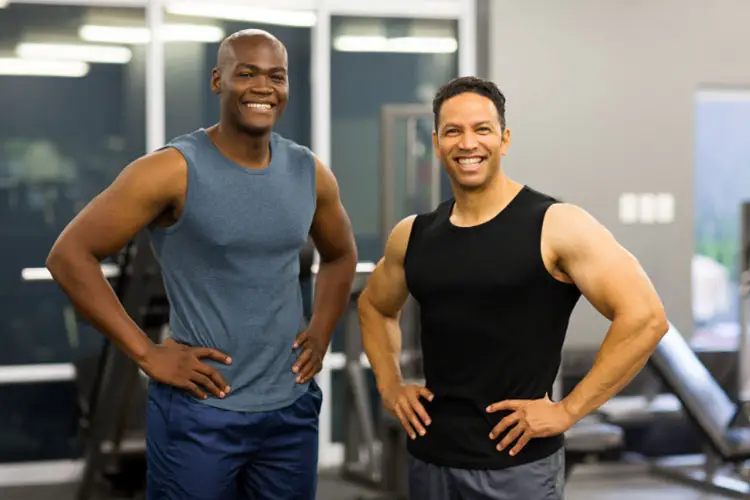
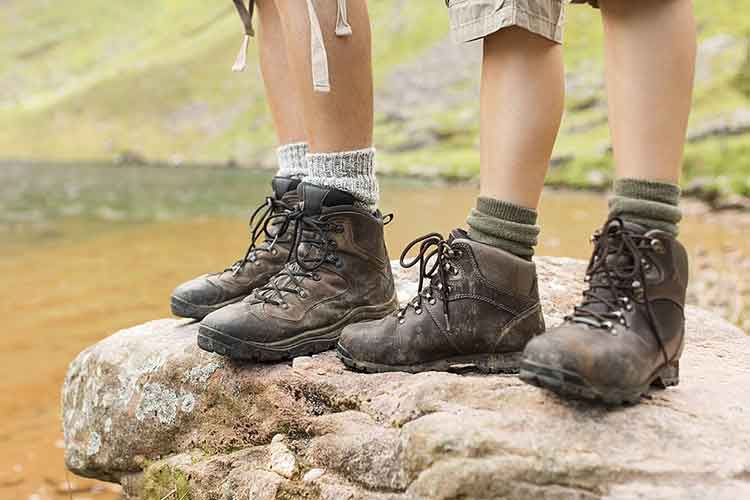
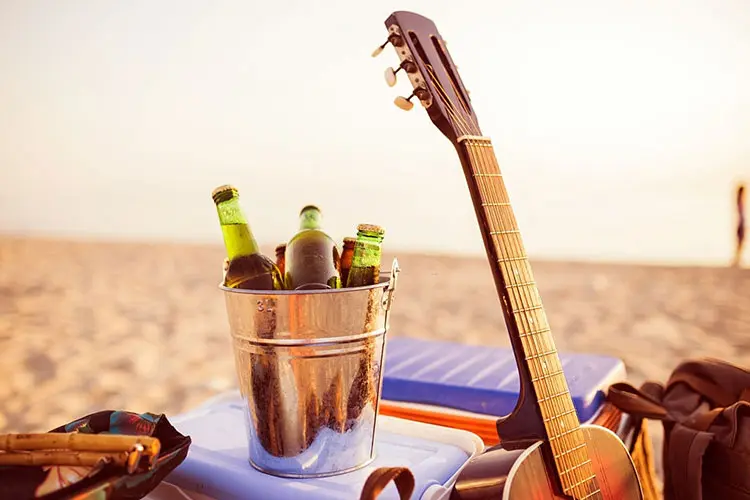





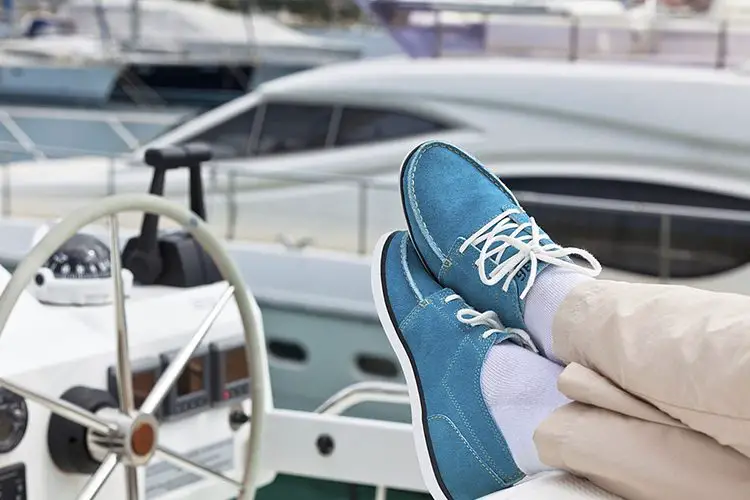 From the boat’s deck to the feet of land-loving-shoe-wearing men, boat shoes have been a wardrobe staple for gents for years. Now, it’s hard to think of smart casual clothing and not think of boat shoes. Not only that, but their practical non-slip soles and distinct upper design have also caught the eyes of many.
From the boat’s deck to the feet of land-loving-shoe-wearing men, boat shoes have been a wardrobe staple for gents for years. Now, it’s hard to think of smart casual clothing and not think of boat shoes. Not only that, but their practical non-slip soles and distinct upper design have also caught the eyes of many.